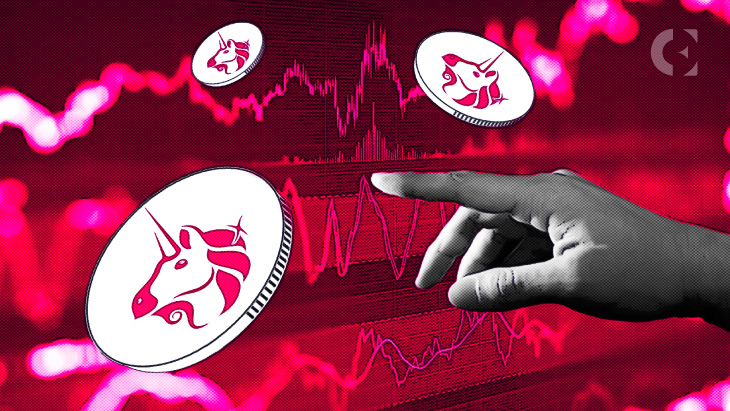Uniswap has emerged as one of the most influential decentralized exchanges in the cryptocurrency ecosystem. Since its inception, it has revolutionized how users trade digital assets by providing a trustless and automated trading experience without relying on centralized intermediaries. Uniswap’s journey is marked by continuous innovation, adoption of novel blockchain concepts, and the establishment of a robust ecosystem that supports liquidity providers and traders alike. Understanding the evolution of Uniswap provides insight into the broader growth and maturation of decentralized finance (DeFi).
The Birth of Uniswap and Its Early Features
Uniswap was launched in November 2018 by Hayden Adams, a software engineer inspired by Ethereum co-founder Vitalik Buterin’s ideas for decentralized exchanges. Unlike traditional exchanges that rely on order books, Uniswap introduced an automated market maker (AMM) model. This model uses smart contracts to facilitate token swaps directly between users, removing the need for intermediaries and order matching systems.
The early version of Uniswap allowed users to provide liquidity to token pairs in exchange for a share of trading fees. This liquidity provision mechanism incentivized users to deposit tokens into pools, creating a self-sustaining ecosystem. One of the most innovative aspects of Uniswap was its simplicity and accessibility. Anyone could create a new token pool by simply depositing an equivalent value of two tokens, democratizing access to trading and liquidity provision.
Uniswap v2: Expanding Functionality and Security
In May 2020, Uniswap launched version 2, which brought significant improvements over its predecessor. One of the key innovations in Uniswap v2 was the introduction of ERC-20 to ERC-20 token swaps. Previously, swaps had to route through Ethereum’s native token, Ether (ETH), which added complexity and additional transaction fees. The new model allowed for more efficient token trading directly between ERC-20 tokens, reducing costs and improving user experience.
Uniswap v2 also implemented more secure smart contract protocols. The introduction of price oracles mitigated the risk of manipulation, particularly in lending and derivatives protocols that relied on accurate pricing data. Additionally, Uniswap v2 included features like flash swaps, enabling users to borrow assets without upfront capital as long as they returned the borrowed funds within the same transaction. This innovation laid the groundwork for creative DeFi strategies such as arbitrage, liquidity migration, and complex financial operations.
Uniswap v3: Concentrated Liquidity and Customization
The launch of Uniswap v3 in May 2021 marked a new era in decentralized trading. The most significant feature of v3 was concentrated liquidity, which allowed liquidity providers to allocate their capital to specific price ranges rather than across the entire spectrum. This approach drastically increased capital efficiency, allowing the same amount of liquidity to facilitate larger trades with reduced slippage. Concentrated liquidity empowered users to earn higher fees while deploying less capital, attracting more sophisticated participants to the platform.
Another innovation introduced in Uniswap v3 was multiple fee tiers. Liquidity providers could now choose the fee tier they wanted based on their risk tolerance and the volatility of the trading pair. This level of customization was unprecedented in decentralized exchanges and highlighted Uniswap’s commitment to optimizing both trading and liquidity provision experiences. Additionally, Uniswap v3 maintained backward compatibility with previous versions, ensuring seamless migration of liquidity and maintaining ecosystem stability.
Governance and the Role of UNI Token
A major milestone in Uniswap’s evolution was the introduction of its governance token, UNI, in September 2020. The UNI token empowered the community to participate in protocol decisions, including fee structures, new feature integrations, and development grants. Governance decentralization allowed Uniswap to operate as a community-driven platform, reducing the influence of a central authority and aligning incentives with the broader user base.
The UNI token has also facilitated the creation of liquidity mining programs, further incentivizing users to provide liquidity and participate in governance. This dual purpose of governance and economic incentive strengthened Uniswap’s position as a leader in the DeFi ecosystem and promoted long-term sustainability.
Uniswap’s Role in the Broader DeFi Ecosystem
Uniswap’s innovations have had a ripple effect across the decentralized finance landscape. Its AMM model inspired numerous other exchanges, leading to the proliferation of DeFi platforms that rely on similar mechanisms. By providing a decentralized alternative to traditional exchanges, Uniswap has contributed to the growth of permissionless finance, enabling anyone with an Ethereum wallet to trade assets without intermediaries.
The protocol has also played a critical role in supporting token launches. Many projects use Uniswap pools to create liquidity for newly issued tokens, providing immediate access to a global trading audience. This democratization of market access has lowered barriers for new projects and fostered innovation in the blockchain space.
Security, Audits, and Challenges
Despite its success, Uniswap has faced security challenges, typical of any smart contract-based platform. The protocol has undergone multiple audits to ensure the safety of user funds, and the introduction of v2 and v3 incorporated lessons learned from earlier vulnerabilities. Flash loan attacks, impermanent loss, and front-running remain concerns for users, but Uniswap continues to provide educational resources and tools to mitigate risks.
The development team and community governance have also played a proactive role in addressing issues and proposing upgrades. By maintaining a transparent and iterative development process, Uniswap has strengthened user trust and positioned itself as a reliable DeFi infrastructure.
Key Features That Define Uniswap Today
Several features distinguish Uniswap as a leading decentralized exchange. First, its automated market maker system ensures continuous liquidity and smooth token swaps. Second, concentrated liquidity and multiple fee tiers in v3 maximize capital efficiency and provide customized strategies for liquidity providers. Third, governance through the UNI token fosters community participation and decentralization.
Additional features include composability with other DeFi protocols, enabling integrations with lending platforms, yield farming strategies, and derivative products. The platform also supports layer 2 scaling solutions, reducing gas fees and improving transaction speed, which is critical as Ethereum network congestion continues to rise.
Future Prospects and Innovation
Looking ahead, Uniswap is likely to continue evolving alongside the broader DeFi ecosystem. Layer 2 integration, cross-chain compatibility, and further optimization of capital efficiency are key areas of focus. The platform’s commitment to community governance ensures that innovation remains aligned with user interests while maintaining security and reliability.
As decentralized finance matures, Uniswap’s model of automated liquidity provision, transparent governance, and continuous innovation serves as a blueprint for other platforms. Its ability to adapt to market demands while empowering users positions it as a cornerstone of the crypto ecosystem for years to come.
Conclusion
Uniswap’s evolution from a simple AMM-based exchange to a sophisticated DeFi platform demonstrates the power of innovation in decentralized finance. With its introduction of concentrated liquidity, flexible fee structures, and community-driven governance, Uniswap has set new standards for how digital assets are traded and managed. Its impact extends beyond trading, shaping the DeFi landscape and influencing new projects, protocols, and financial strategies. By continuously improving functionality, security, and user experience, Uniswap remains a pioneer in redefining the possibilities of decentralized exchanges and fostering a truly open financial ecosystem.


